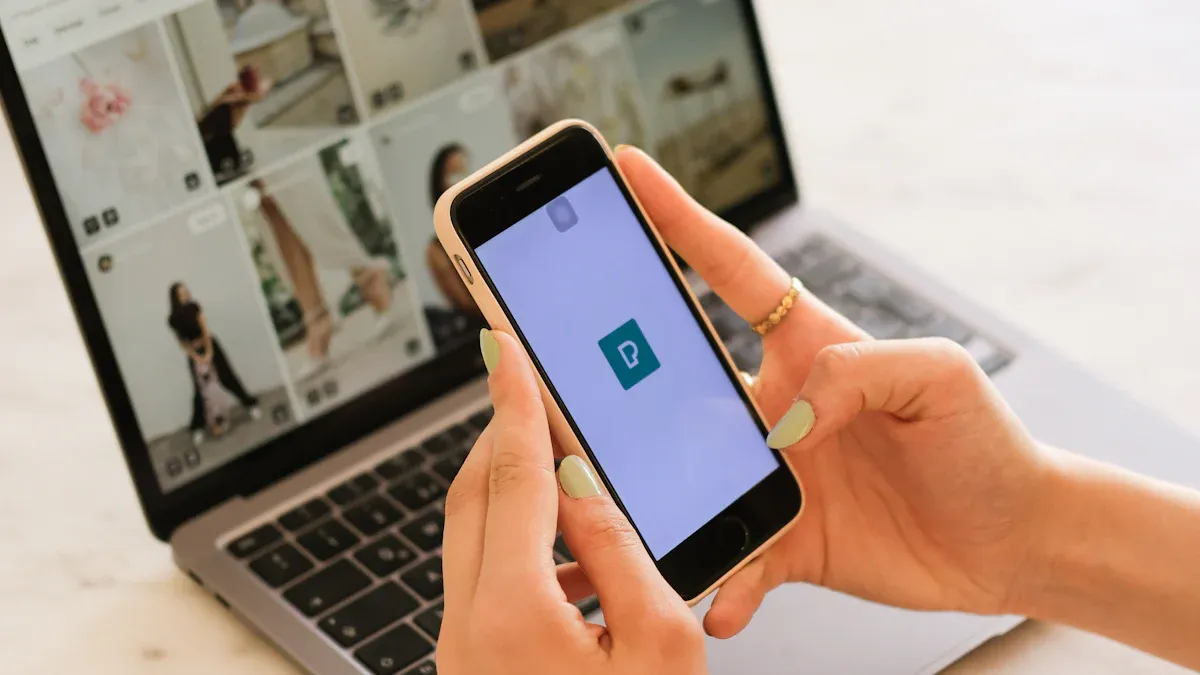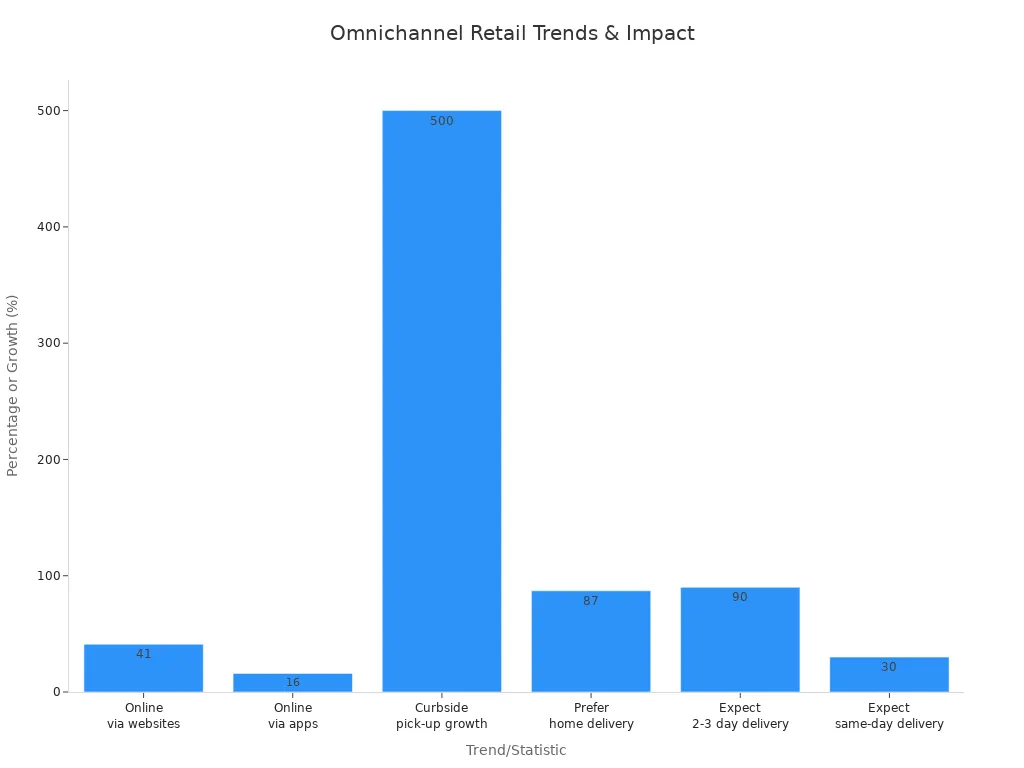7 Essential Steps for Successfully Operating a Retail Store in the Digital Age

You run a store in a world where over 2 billion people shop online. Retail digital transformation keeps growing fast. When you blend in-store and online strategies, your customers get convenience, choice, and a better experience. Take action now—these Essential Steps will help you stand out.
Key Takeaways
Set clear objectives to guide your retail strategy. Focus on using technology to engage customers and improve operations.
Analyze market and customer data to make informed decisions. Use tools like POS systems and social media monitoring to gather insights.
Integrate technology in-store to enhance the shopping experience. Use digital displays and apps to streamline operations and engage customers.
Essential Steps for Retail Success
You want your retail store to thrive in the digital age. Following a structured approach helps you stay focused and adapt to changes quickly. When you use the Essential Steps, you set your store up for long-term growth. Many successful retailers use strong leadership, regular employee training, and ongoing technology checks to keep their stores ahead of the curve.
Tip: Take time to review each step. You will find practical advice and real examples to guide you.
Set Clear Objectives
Start by deciding what you want to achieve. Clear goals help you measure progress and keep your team motivated. Many top stores focus on using technology to engage customers, bring the best of online shopping into the store, and collect useful data. You can also empower your staff with new tools and make your operations run smoothly. When you use customer data, you learn what shoppers like and improve your product selection and marketing. Training your team gives them the skills to deliver great service.
Here are some common objectives:
Engage customers with new technology.
Blend online and in-store experiences.
Use stores to gather insights and offer extra services.
Give employees better tools.
Make operations more efficient.
Use analytics to understand your customers.
Analyze Market & Customer Data
You need to know your customers and your market. Data helps you make smart choices. Look at customer details, sales numbers, inventory, and even what your competitors are doing. Use tools like POS systems, web analytics, and social media monitoring to gather information. Surveys and feedback also show what shoppers want.
Data Source | Description |
|---|---|
Purchase Transactions | Shows what people buy in-store and online. |
Online Interactions | Tracks how shoppers use your website. |
Social Media | Reveals what customers say and like on social platforms. |
CRM Data | Gives detailed profiles from loyalty programs and surveys. |
When you use data, you can forecast demand, manage inventory, and set better prices. You also improve the shopping experience and make your marketing more effective. These Essential Steps help you stay ahead in a fast-changing retail world.
Store Layout & Digital

Integrate Technology In-Store
You want your store to feel modern and easy to shop in. Adding the right technology can make a big difference for both you and your customers. Many top stores use digital displays, smart apps, and even robots to help with daily tasks. These tools help you keep track of inventory, train your team, and make shopping more fun for everyone.
Technology | Description |
|---|---|
Shop floor apps for associates | AI-powered tools for inventory checks and staff training |
AI-driven customer insights | Helps you understand what shoppers want |
E-commerce fulfillment | Lets you handle both online and in-store orders at once |
Digital in-store retail media | Shows ads and deals on screens right in the store |
When you use these tools, you can gather data, speed up checkout, and keep shelves stocked. Customers enjoy quick service and new ways to explore products. For example, using NFC tags or QR codes lets shoppers learn more about items with their phones. You also make your store more efficient, so you spend less time fixing problems and more time helping customers.
Tip: Work with your team to pick the best tech for your store. Make sure everyone knows how to use it.
Enhance Physical-Digital Flow
Blending your physical store with digital tools creates a smooth shopping journey. You want customers to move easily between your website, app, and store. A smart layout keeps people browsing longer and helps them find what they need.
Evidence Type | Description |
|---|---|
Revenue Growth | |
Customer Satisfaction | AI-driven layouts make shopping easier and more enjoyable |
Shopping Behavior | Smart design encourages browsing and repeat visits |
Customers often turn right when they enter, so place eye-catching displays there.
Guide shoppers in a counterclockwise path to help them see more products.
Use digital signs to highlight deals and new arrivals.
Sephora’s Virtual Artist App is a great example. It lets shoppers try on makeup using their phones, mixing online fun with in-store testing. When you connect your systems, you can track inventory in real time and offer the same deals everywhere. These Essential Steps help you create a store that feels fresh and connected, both online and offline.
Digital Marketing & Social Media

Build Online Presence
You want your store to stand out online. A strong online presence helps you reach more shoppers and build trust. Start with these steps:
Create and update your website. Make sure it looks good and works on phones.
Build an online shop so customers can buy from anywhere.
Start writing blogs to share news, tips, or stories about your products.
Get active on social media. Post photos, videos, and updates often.
Send out targeted emails to keep your customers in the loop.
These actions help people find your store and remember your brand. When you follow the Essential Steps, you make it easy for shoppers to connect with you, both online and in person.
Tip: Keep your website and social pages fresh. Update them with new products, events, or sales.
Engage Customers
You want shoppers to feel excited about your store. Digital marketing lets you talk to your audience and keep them coming back. Here’s what works best:
Evidence Type | Description |
|---|---|
Increased Profitability | Digital marketing helps you reach the right people and boost sales. |
Brand Loyalty | |
Customer Engagement | Returning customers spend 67% more than new ones. |
Data Utilization | You get useful data to make better marketing choices. |
On social media, watch for these signs of engagement:
Likes show people enjoy your posts.
Shares mean your content is worth spreading.
Comments let you hear what shoppers think.
Mentions show how often people talk about your brand.
Stay active and reply to your followers. This builds trust and keeps your store top of mind.
Omnichannel & E-Commerce
You want your store to work smoothly online and offline. Omnichannel retail means you connect every way your customers shop—website, app, and in-store. When you blend these channels, you make shopping easier and boost loyalty. Did you know consumers spend 1.5 times more with brands that offer a seamless experience? Omnichannel shoppers are three times more loyal than those who only shop online.
Connect Sales Channels
You need to link your sales channels so customers get the same great experience everywhere. Start by using a unified customer data platform. This lets you see what shoppers like and how they buy. Real-time inventory tracking helps you avoid running out of stock or selling items you don’t have. Keep your branding and service consistent, whether someone shops in your store or on your website.
Strategy | Description |
|---|---|
Unified Customer Data Platform | Collects customer info from all sources for better insights. |
Optimise Inventory Management | Tracks stock in real time for smooth shopping and easy pick-up options. |
Consistent Branding & Experience | Makes your store feel the same everywhere, building trust and loyalty. |

Here are some trends you should know:
Trend/Statistic | Description |
|---|---|
US consumers shop online via websites. | |
16% | US consumers shop online via apps. |
500% | Target’s curbside pick-up grew in 2020. |
87% | Shoppers aged 35-44 prefer home delivery. |
90% | Shoppers expect delivery in 2-3 days. |
30% | Shoppers expect same-day delivery. |
Streamline Fulfillment
You want orders to reach customers fast and without mistakes. Try these methods:
Buy Online, Pick Up In-Store (BOPIS) gives shoppers speed and convenience.
Buy Online, Return In-Store (BORIS) saves on shipping and makes returns easy.
Reserve Online, Pick Up In-Store (ROPIS) lets customers try before they buy.
Order In-Store, Ship-to-Home helps when you run out of stock.
Use inventory management systems to keep track of products. Order management systems help you handle orders from every channel. Analytics and AI can predict what customers want, so you stock the right items. Robotics and automation make your warehouse run faster.
Fulfillment Method | Benefits |
|---|---|
BOPIS | Fast, easy pick-up, builds loyalty. |
BORIS | Saves money, simple returns. |
ROPIS | Fewer returns, more happy customers. |
Order In-Store, Ship-to-Home | Keeps sales up, even with low stock. |
Centralized Order Coordination | Fewer mistakes, smoother process. |
Real-Time Inventory Tracking | Always know what’s in stock. |
When you follow these Essential Steps, you create a shopping experience that meets modern expectations and keeps customers coming back.
Customer Engagement
Personalize Experience
You want every shopper to feel special when they visit your store or website. Personalization makes a big difference. When you use customer data, you can suggest products, send custom offers, and create a shopping journey that feels unique. Most shoppers notice when you remember their preferences. In fact, 80% of customers are more likely to buy when you offer a personalized experience. If you personalize, customers are 110% more likely to add more items to their basket.
Here are some top ways to personalize:
Unify customer data for a complete view of each shopper.
Segment your audience using AI to predict what they want.
Give product recommendations based on past purchases.
Offer in-store promotions tailored to each customer.
Use interactive displays that show information based on interests.
A recent study shows that 51% of customers want to adjust their preferences quickly. Almost half expect a consistent experience both online and in-store. When you personalize, you help shoppers feel seen and valued.
Loyalty & Support
Loyalty programs and great support keep customers coming back. You can reward shoppers for every visit or purchase. Emotional engagement matters—a whopping 70% of loyal customers spend twice as much. If you personalize your loyalty program, 78% of shoppers are more likely to buy again.
Statistic | Implication |
|---|---|
65% of revenue comes from repeat customers | Retaining shoppers is key for growth. |
5% increase in retention = 25% more profit | Small changes bring big rewards. |
Try a points system like Club Blue from Goodwill Southern New England. Shoppers earn points for every purchase and get discounts when they reach a goal. This makes them feel appreciated and keeps them coming back. Always offer friendly support, answer questions fast, and make returns easy. When you do, you build trust and turn shoppers into loyal fans.
Track & Optimize
Monitor Key Metrics
You want your store to grow. You need to know what works and what needs to change. Start by tracking the right numbers. These key metrics show how your store performs every day:
Foot Traffic
Digital Traffic
Average Customer Spending
Sales Per Employee
Backorder Rate
Inventory Turnover Rates
When you watch these numbers, you spot trends fast. You see which products sell best and where you lose sales. You can also find out if your team needs more help or training.
Many stores use smart tools to track these numbers. Here’s a quick look at some popular options:
Tool Type | Description |
|---|---|
Retail Audit Software | Gives you one place to check store standards and fix problems quickly. |
Digital Checklists | Helps your team collect data the same way in every store. |
Visual Dashboards | Shows your results in easy-to-read charts and graphs. |
Tip: Check your dashboards often. Small changes in your numbers can mean big changes for your business.
Adapt Strategies
You want to keep your store ahead of the game. Use your data to make smart moves. Try these steps to improve your results:
Targeted Marketing Campaigns
Optimized Inventory Management
Enhanced Customer Experience
Dynamic Pricing Strategies
Cross-Channel Integration
Social Media Engagement
Data-Driven Decision Making
You can also streamline your processes, adjust staffing in real time, and use demand forecasting to stay ready for busy days. Technology helps you react fast. When you use your data, you make better choices and keep your customers happy. Your store stays flexible, and you grow stronger every day.
You can lead your store to digital success by following these seven steps. Start small—pick one or two changes today. Keep learning and adapting. Loyal customers spend more and try new things.
Stay curious, invest in your team, and embrace digital transformation. Your future in retail looks bright!
FAQ
How can I start using digital tools in my store?
Try one tool at a time. Begin with a simple POS system or social media page. Ask your team for feedback as you go.
What is the best way to keep customers coming back?
Offer rewards and friendly service. Send personal offers or thank-you notes. Make every visit feel special for your shoppers.
Do I need a website if I already have a physical store?
Yes! A website helps people find you online. You can show products, share news, and answer questions any time.
See Also
Transforming Online Store Management With AI E-Commerce Solutions
Essential Insights for Retailers on AI Corner Store Growth
Understanding Corner Store Fundamentals and Their Importance
Revolutionizing Retail: The Impact of Smart Vending Machines
